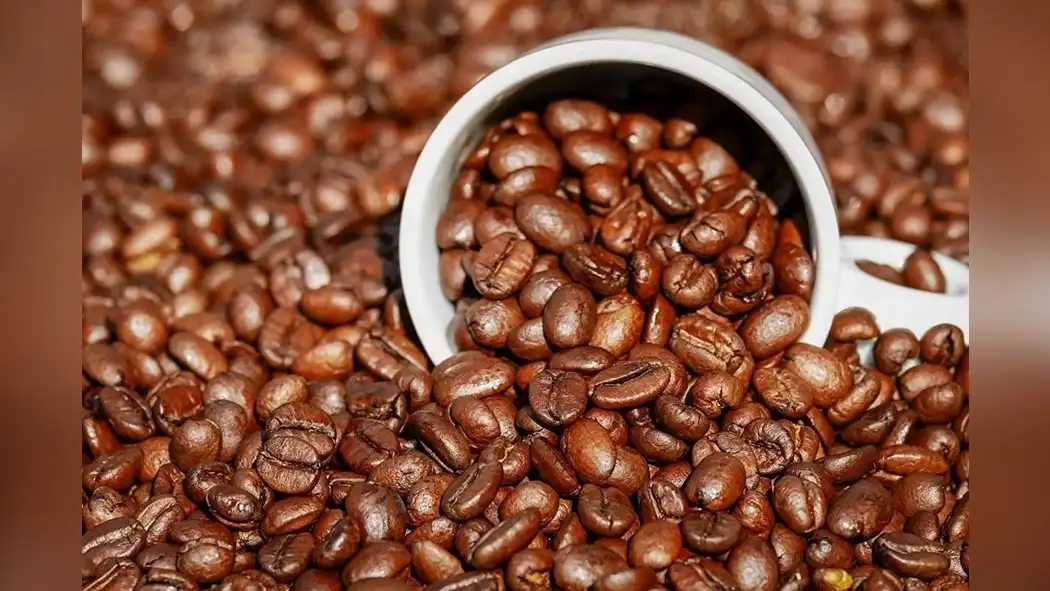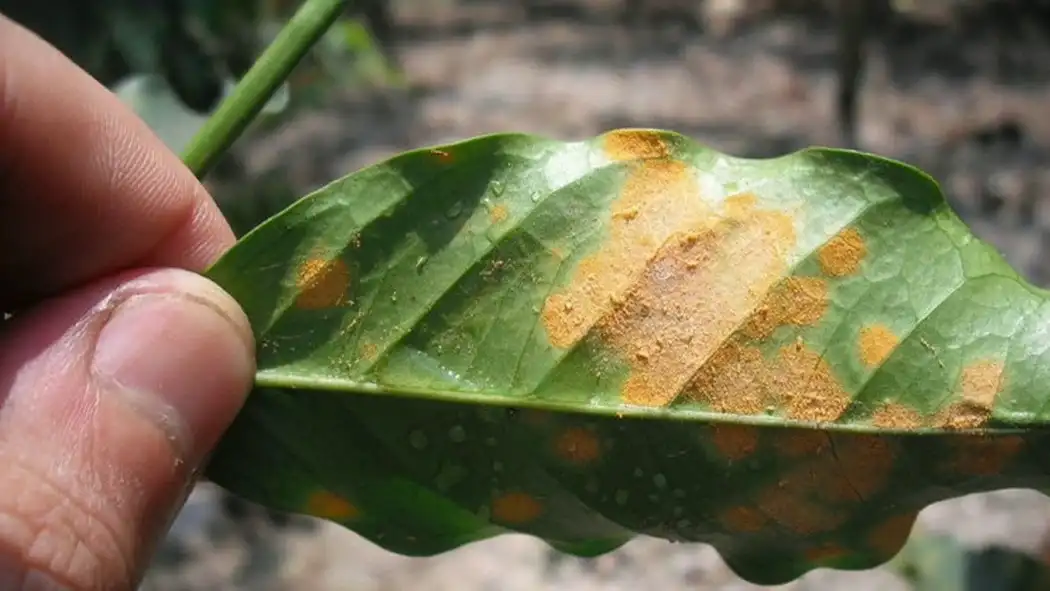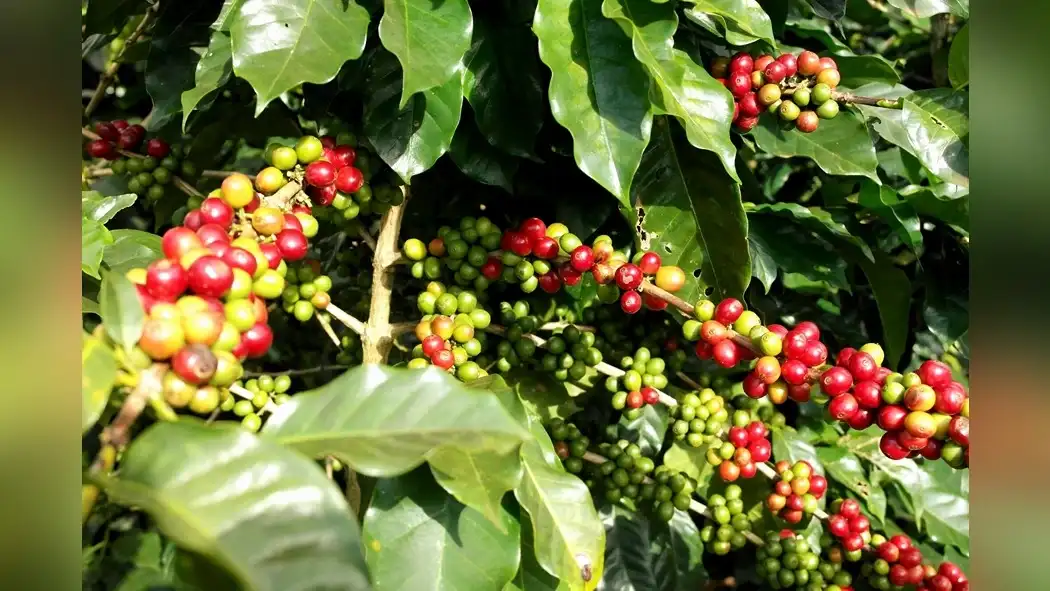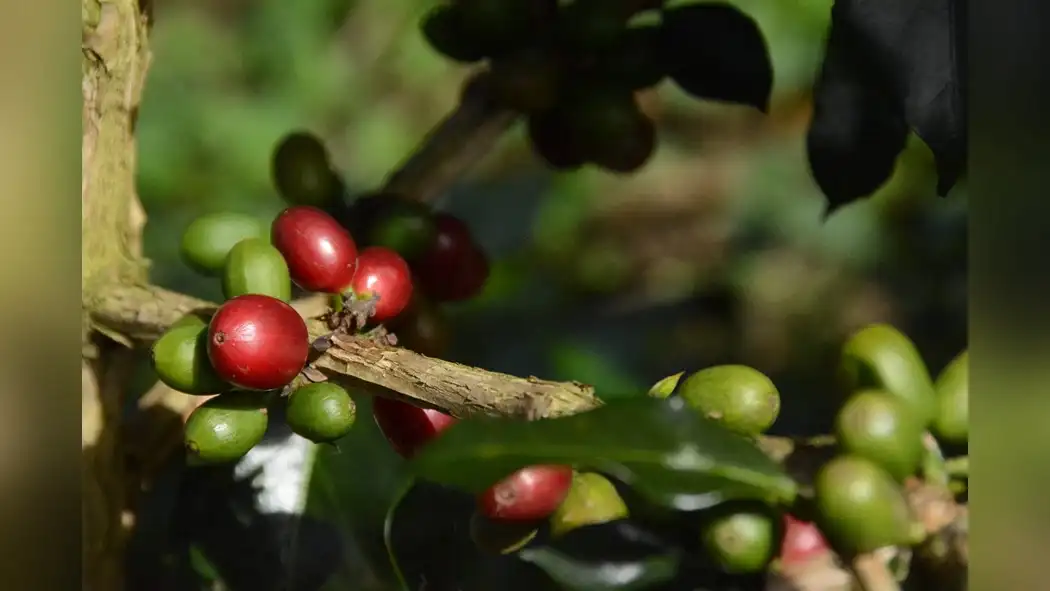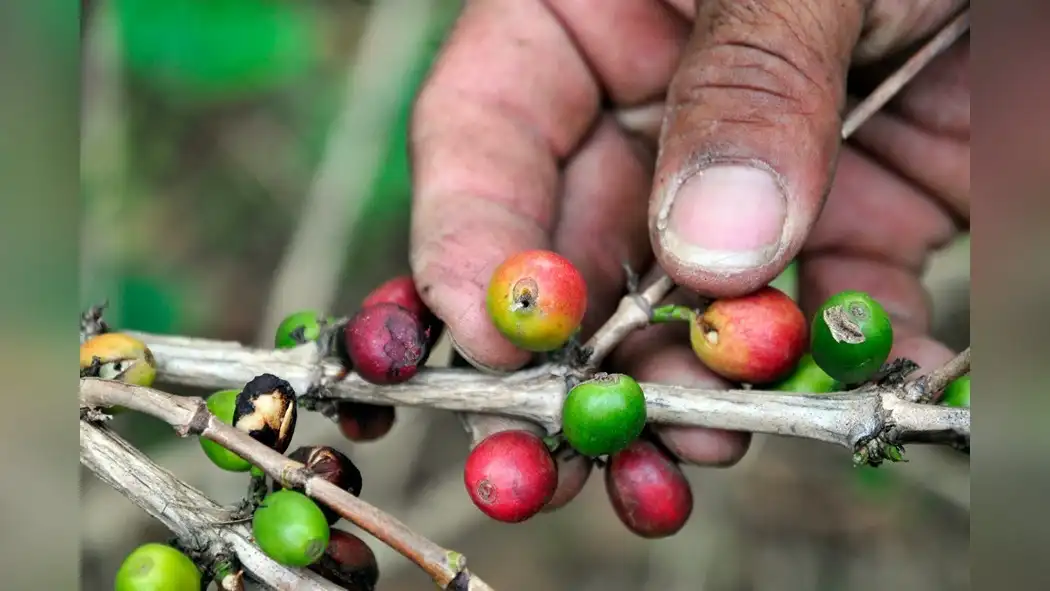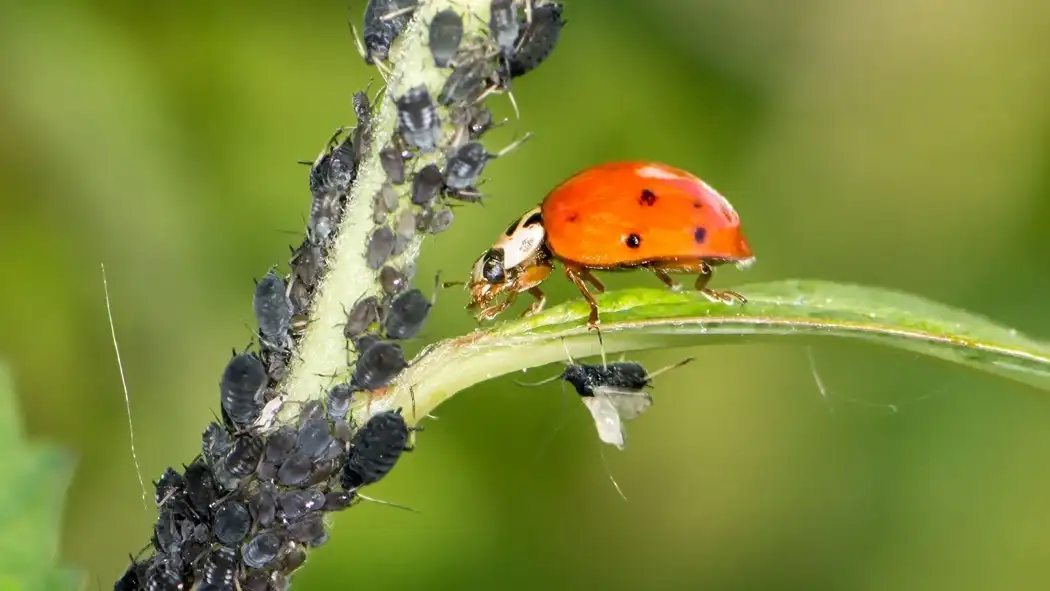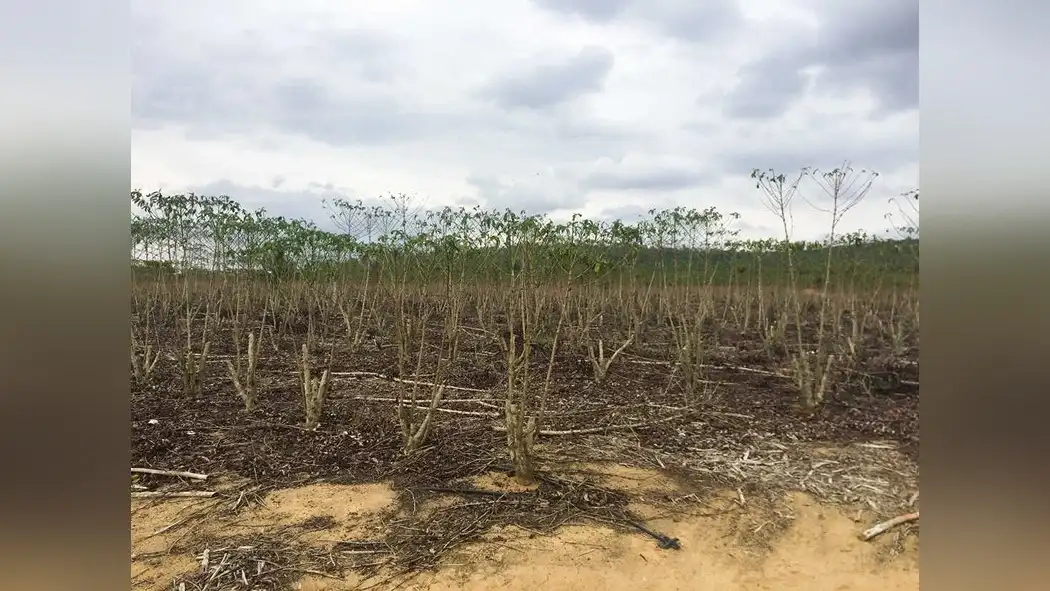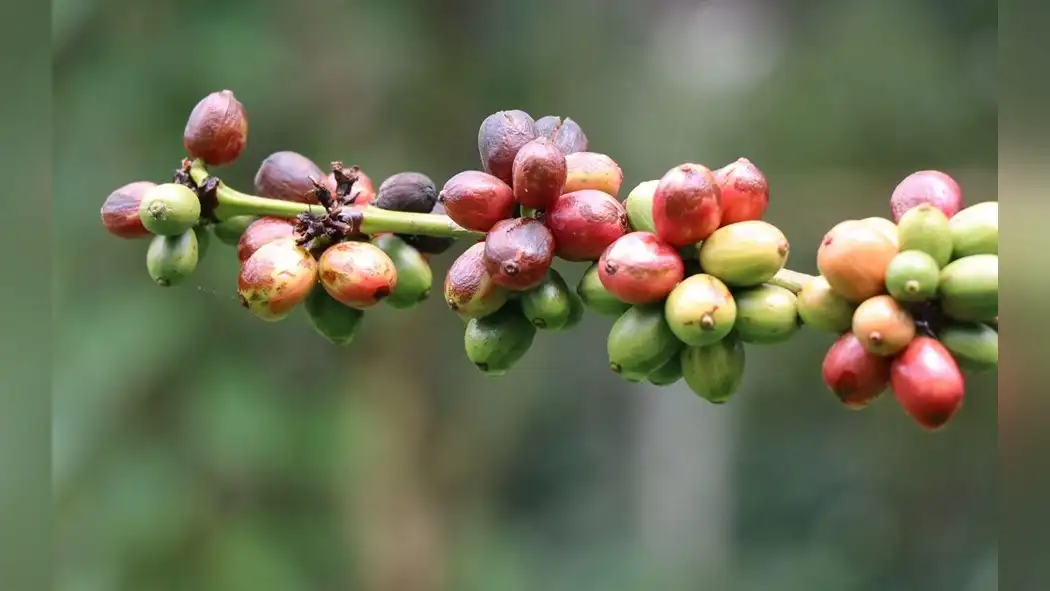You might wonder if Robusta coffee is really as resistant to pests and diseases as they say. Well, let's take a closer look at this fascinating aspect of Robusta coffee.
Understanding how Robusta coffee naturally defends itself against pests and diseases can provide valuable insight into sustainable cultivation practices. This exploration will delve into the plant's remarkable resistance mechanisms, the role of plant secondary metabolites, and the influence of environmental factors on its resilience.
By examining these factors, you'll gain a deeper understanding of how Robusta coffee's natural defenses can contribute to sustainable pest and disease management.
The Importance of Robusta Coffee's Natural Defenses
Robusta Coffee's natural defenses play a crucial role in protecting its crops from pests and diseases. The plant has developed a natural immunity that helps it ward off attacks from pests, such as the coffee borer beetle, which can devastate coffee crops. This natural immunity is a result of the plant's ability to produce compounds that are toxic or repellent to pests, effectively serving as a form of pest control.
For example, Robusta Coffee contains caffeine, which acts as a natural pesticide, deterring insects from feeding on its leaves and beans. Additionally, the plant produces other chemical compounds that contribute to its resistance against diseases, such as fungal infections.
Understanding the importance of Robusta Coffee's natural defenses is crucial for farmers and researchers who seek to cultivate healthy and sustainable coffee crops. By harnessing the power of the plant's natural immunity, it's possible to reduce the reliance on synthetic pesticides and create more resilient coffee plants that can thrive in diverse environmental conditions.
Understanding the Role of Plant Secondary Metabolites
When exploring the importance of Robusta Coffee's natural defenses, it's essential to delve into the role of plant secondary metabolites in enhancing the plant's resistance to pests and diseases. Plant secondary metabolites are chemical compounds produced by the coffee plant that play a crucial role in its defense mechanisms. These compounds act as natural pesticides and protect the plant from various pests and diseases. They're also responsible for the characteristic flavors and aromas of coffee.
The role of plant secondary metabolites in defending against pests and diseases is vital for the survival of the Robusta Coffee plant. These chemical compounds act as a deterrent to pests, making the plant less appealing to insects and other potential threats. Additionally, they've antimicrobial and antifungal properties, which help the plant fend off diseases.
Understanding the significance of plant secondary metabolites provides insight into the natural defense mechanisms of Robusta Coffee. These chemical compounds are a key component of the plant's resilience, contributing to its ability to thrive in diverse environments and withstand potential threats. Recognizing the role of plant secondary metabolites sheds light on the intricate ways in which the coffee plant protects itself and ultimately influences the quality of the coffee beans harvested.
Pest Resistance Mechanisms in Robusta Coffee
To understand how Robusta Coffee defends itself against pests, delve into its pest resistance mechanisms, which are intricately linked to the plant's production of plant secondary metabolites.
Plant immunity plays a crucial role in the pest resistance of Robusta Coffee. When pests attack, the plant activates its defense mechanisms, which involve the production of specialized compounds that deter or inhibit the pests' activities. These compounds, known as plant secondary metabolites, are responsible for the plant's ability to resist pests and maintain its health. Understanding these mechanisms is vital for effective pest management in Robusta Coffee cultivation.
The plant secondary metabolites act as natural pesticides, protecting the coffee plants from a wide range of pests. They play a dual role, not only deterring pests but also enhancing the plant's overall resilience. By understanding how these compounds function, farmers can employ strategies that promote their production within the plants, improving pest resistance and reducing the reliance on chemical pesticides. This sustainable approach benefits both the environment and the long-term health of the coffee crop.
In essence, delving into the pest resistance mechanisms of Robusta Coffee provides valuable insights for more effective pest management strategies.
Disease Resistance Mechanisms in Robusta Coffee
Robusta coffee has developed natural defenses to protect itself against various diseases, which contribute to its overall resilience.
Additionally, the genetic makeup of Robusta coffee plays a significant role in its ability to resist diseases, making it a valuable trait for cultivation.
Understanding these disease resistance mechanisms is crucial for ensuring the long-term health and productivity of Robusta coffee plants.
Robusta's Natural Defenses
You can explore Robusta coffee's natural defenses against pests and diseases through its robust disease resistance mechanisms. Understanding these mechanisms is crucial in appreciating the coffee plant's ability to fend off potential threats.
Here are three key aspects that contribute to Robusta's natural defenses:
- Natural Immunity: Robusta coffee possesses inherent resistance to certain pests and diseases due to its genetic makeup. This natural immunity helps the plant withstand attacks and reduces its susceptibility to certain pathogens.
- Pest Resilience: Robusta's natural defenses include mechanisms that actively deter pests, such as the production of compounds that repel or inhibit the growth of harmful insects and organisms.
- Disease Tolerance: The plant's ability to tolerate certain diseases without succumbing to them is a vital aspect of its natural defense system, contributing to its overall resilience in challenging environments.
Genetic Disease Resistance
When exploring genetic disease resistance in Robusta coffee, it is important to understand the underlying mechanisms that enable the plant to fend off potential threats. Genetic breeding plays a crucial role in enhancing the plant's natural defenses against pests and diseases. By selectively breeding plants with desirable traits, such as pest resistance, geneticists can develop robust varieties of Robusta coffee that are naturally more resistant to common pests and diseases. This approach not only reduces the reliance on chemical pest management but also ensures the long-term sustainability of coffee cultivation. The table below illustrates some of the key mechanisms involved in genetic disease resistance in Robusta coffee:
| Mechanism | Description |
|---|---|
| Plant Immune Responses | Activation of defense mechanisms upon pest or disease attack |
| Genetic Diversity | Selective breeding for diverse traits |
| Resistance Genes | Incorporation of genes conferring resistance into breeding programs |
This genetic approach holds great promise for ensuring a sustainable and resilient coffee industry.
Impact of Environmental Factors on Resistance
By understanding the effects of environmental factors on resistance, you can better cultivate robusta coffee to withstand pests and diseases. The impact of climate and soil conditions plays a crucial role in the coffee plant's ability to resist pests and diseases. Here's what you need to know:
- Climate: The climatic conditions significantly affect the resistance of robusta coffee to pests and diseases. For instance, temperature and humidity levels can create an environment conducive to certain pests and diseases. Understanding the optimal climate for robusta coffee growth and adjusting environmental factors accordingly can enhance its natural resistance.
- Soil Conditions: The type and quality of soil can impact the plant's ability to resist pests and diseases. Soil pH, nutrient levels, and drainage all play a role in determining the overall health and resistance of the coffee plants. By ensuring that the soil conditions are optimal for robusta coffee cultivation, you can promote its natural resistance to pests and diseases.
- Environmental Adaptation: Robusta coffee plants have the ability to adapt to their environment. By carefully selecting and cultivating robusta coffee in environments that mimic its natural habitat, you can enhance its resistance to pests and diseases, ultimately promoting a healthier and more productive crop.
Breeding for Enhanced Resistance Traits
To further improve robusta coffee's resistance to pests and diseases, enhancing specific traits through selective breeding is crucial for developing more resilient and productive coffee plants. Breeding techniques play a vital role in the development of robusta coffee varieties with enhanced resistance traits. By selectively breeding plants with desirable characteristics, such as pest and disease resistance, researchers can develop coffee varieties better equipped to withstand environmental stressors.
| Breeding Techniques | Benefits |
|---|---|
| Selective Breeding | Allows for the propagation of desirable traits |
| Hybridization | Creates genetic diversity for enhanced resilience |
| Marker-Assisted Breeding | Targets specific genes for resistance traits |
Resistance traits development involves the use of these breeding techniques to introduce and enhance qualities such as pest and disease resistance, adaptability to changing climate conditions, and improved yield potential. Through careful selection and controlled breeding, coffee plants can be developed to possess a greater ability to fend off pests and diseases, ultimately leading to more sustainable and thriving coffee production.
Sustainable Pest and Disease Management Practices
You can employ integrated pest management techniques to effectively control pests and diseases while minimizing environmental impact.
By utilizing a combination of biological, cultural, and chemical control methods, you can maintain a balanced ecosystem in your coffee plantation.
Additionally, consider the natural disease resistance factors present in robusta coffee varieties to further enhance sustainable pest and disease management practices.
Integrated Pest Management Techniques
When managing pests and diseases in your robusta coffee plantation, consider implementing integrated pest management techniques for sustainable practices. These techniques focus on reducing pest damage while minimizing the impact on the environment and human health.
Here are three crucial integrated pest management techniques to consider:
- Biological Control: Introduce natural predators, parasites, or pathogens to control pest populations.
- Crop Rotation: Alternate coffee with different crops to disrupt pest life cycles and reduce pest pressure.
- Trap Crops: Plant specific crops to attract pests away from coffee plants, protecting the main crop.
Natural Disease Resistance Factors
Exploring natural disease resistance factors is essential for implementing sustainable pest and disease management practices in your robusta coffee plantation.
Plant immunity and ecological interactions play crucial roles in pest management and crop protection. Understanding the natural disease resistance factors of robusta coffee plants can help you develop effective strategies to minimize the impact of pests and diseases on your crop.
By leveraging the plant's inherent ability to resist diseases and interact with its environment, you can reduce the reliance on chemical interventions, leading to a more sustainable and environmentally friendly approach to crop protection.
Incorporating these natural factors into your pest management practices can contribute to the long-term health and productivity of your robusta coffee plantation while minimizing the potential negative impacts on the surrounding ecosystem.
Conclusion
You've learned about the impressive natural defenses of robusta coffee, with 60% of its resistance attributed to plant secondary metabolites. These compounds help the plant fend off pests and diseases, reducing the need for chemical interventions.
With climate change affecting pest and disease pressure, breeders are working to enhance robusta's resistance traits. By understanding and harnessing these natural defenses, sustainable pest and disease management practices can be implemented, ensuring the long-term health of robusta coffee crops.

